This fall, the Peach State “comes as sweet and clear, as moonlight through the pines.”
Autumn arrives late in Northeast Florida. The temperatures of summer slowly fade and the days grow shorter as we pass through the “ber” months. But we don’t experience dramatic changes like a burst of autumn colors in our forests. For that, we need to head north. The good news is that we don’t have to travel far. Parts of Georgia enjoy beautiful seasonal scenery and chilly temps perfect for outdoor adventures.
Join us as we journey down a few roads less traveled in Georgia, from the far northern edge of the state to its western hills. Along the way we’ll visit small towns, agricultural outposts, significant historic sites, lakes, rivers, waterfalls and more, all the while bathed in the burnt oranges, yellows and reds of autumn.
BLAIRSVILLE
A growing trend in travel is something called “townsizing”—where vacationers are seeking slower-paced, less crowded destinations, places with walkable downtowns, natural beauty and historic charm. A couple of hours north of Atlanta, the mountain hamlet of Blairsville offers these qualities in spades, and it’s an ideal place to soak up the brilliant colors of North Georgia’s fall colors while experiencing small-town life at its best.
 The highest peak in Georgia, Brasstown Bald, is only a short drive from the center of town. Intrepid explorers can walk up the 1.2-mile trail to the top. There’s also a shuttle, ferrying visitors up and down the mountain. At the top, savor the 360-degree views of four states—Georgia, Tennessee, North Carolina and South Carolina. Autumn sunsets are particularly beautiful.
The highest peak in Georgia, Brasstown Bald, is only a short drive from the center of town. Intrepid explorers can walk up the 1.2-mile trail to the top. There’s also a shuttle, ferrying visitors up and down the mountain. At the top, savor the 360-degree views of four states—Georgia, Tennessee, North Carolina and South Carolina. Autumn sunsets are particularly beautiful.
The legendary Appalachian Trail winds through the area. Plus, waterfall excursions like the Helton Creek Falls Trail and Trahlyta Lake Trail in Vogel State Park offer plenty of visual rewards alongside crisp mountain air and quiet moments in nature.
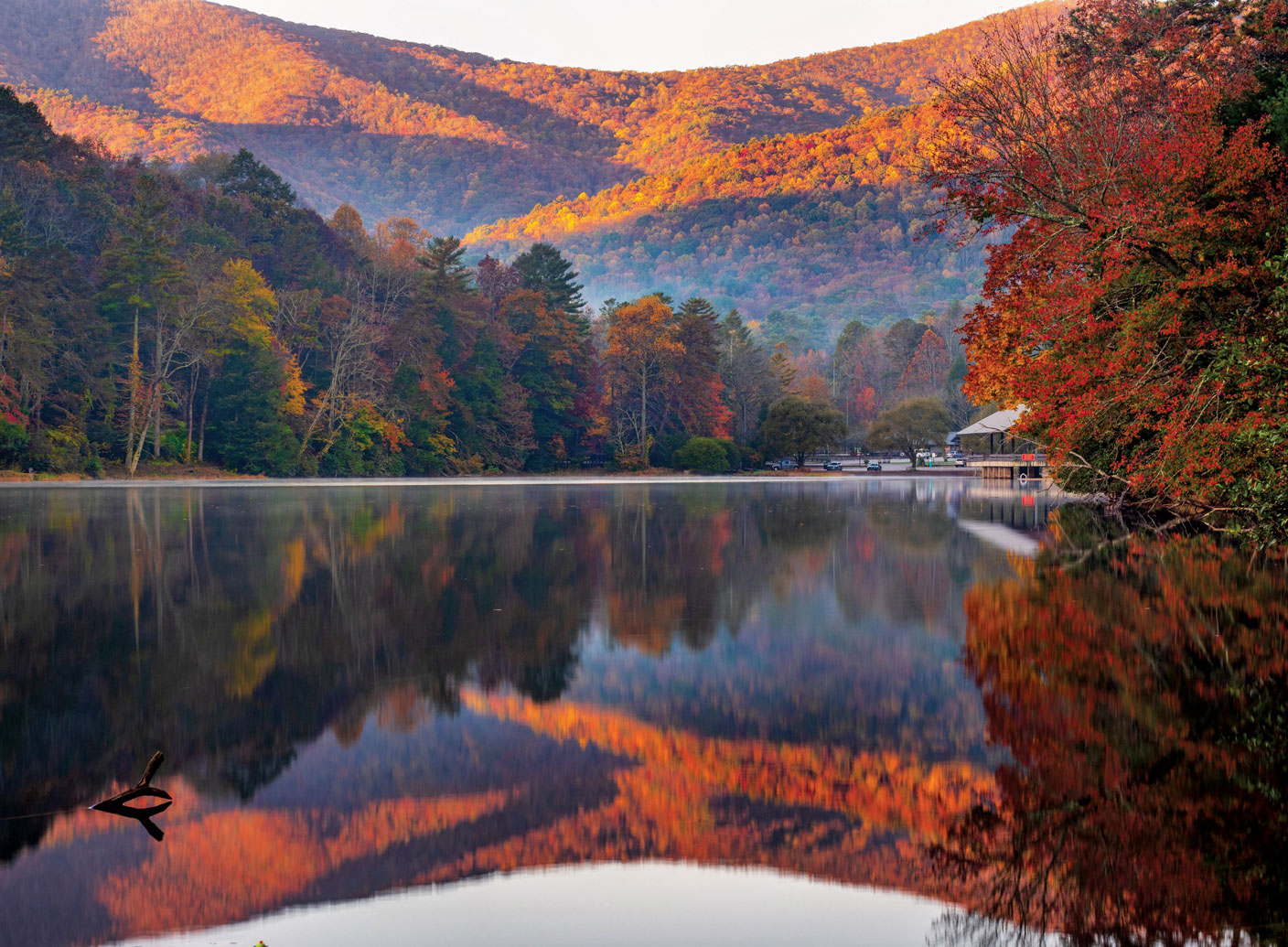 The tidy Downtown charms with locally owned shops and restaurants circling the historic Union County Courthouse, now a museum highlighting local and Native American history. Thirsty? Take a sip or two at Odom Springs Winery, sample some moonshine at Grandaddy Mimms Distilling Co., or share a pint at Blairsville Brewing Company.
The tidy Downtown charms with locally owned shops and restaurants circling the historic Union County Courthouse, now a museum highlighting local and Native American history. Thirsty? Take a sip or two at Odom Springs Winery, sample some moonshine at Grandaddy Mimms Distilling Co., or share a pint at Blairsville Brewing Company.
Fall also marks the annual Sorghum in the Mountains Festival. One of Georgia’s longest-running autumn celebrations, the Mountains Festival centers around the art of cooking sweet syrup from locally grown sorghum cane. In addition, there’s plenty of arts and crafts shopping, music and seasonal eats. This year’s two-weekend fest is October 11-12 and 18-19 at Meeks Park.
COLUMBUS
Did you know there is one place in the country where you can zip line across a state line? And a river at the same time. Columbus is home to a 1,200-foot zip line called the Blue Heron that whisks riders (at about 40 mph) across the Chattahoochee River from Georgia to Phenix City, Alabama. One step and riders are soaring like birds 100 feet over the river with the Columbus skyline in full view. But the soaring isn’t over. A second zip line brings you safely to ground.
 The Chattahoochee is the town’s defining natural feature. As such, the river plays a key role in much of the fun found in Columbus. Here, the Riverwalk hugs the bank of the river for some 15 miles of linear park. (Hey, Jacksonville, are you paying attention?). Oh, and there is the world’s longest urban whitewater rafting course, plus plenty of tamer waters for kayaking and stand-up paddleboarding. And, if that’s not enough, visitors can cycle, hike, fish or picnic in a peaceful waterside park.
The Chattahoochee is the town’s defining natural feature. As such, the river plays a key role in much of the fun found in Columbus. Here, the Riverwalk hugs the bank of the river for some 15 miles of linear park. (Hey, Jacksonville, are you paying attention?). Oh, and there is the world’s longest urban whitewater rafting course, plus plenty of tamer waters for kayaking and stand-up paddleboarding. And, if that’s not enough, visitors can cycle, hike, fish or picnic in a peaceful waterside park.
As for attractions, Columbus State University’s Coca-Cola Space Science Center earns top marks. Here, visitors discover Georgia’s largest collection of NASA Space Shuttle artifacts. Plus, there’s a virtual trip to the International Space Station and flight simulators. Founded in 1999, the Columbus Botanical Garden is a 36-acre property that provides visitors an attractive site and colorful setting for photography, special events, horticultural seminars and community learning. Hike the Joann Holt Walking Trail or stroll through the display gardens that showcase a range of native plant species. On weekdays, you can also tour the historic 1890s Adams Farmhouse. On October 25, bring your little ghosts and goblins to the “Bootanical Gardens,” a not-so-scary Halloween happening with carnival games, crafts, food and even live bat and snake shows.
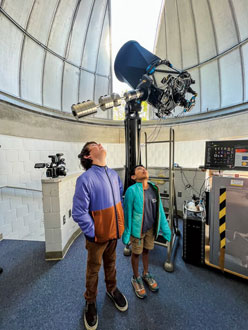 The walkable Uptown district features more than 25 locally owned restaurants and bars, including a few rooftop spots ideal for a crisp autumn evening. Each Saturday, three blocks along Broadway host over 100 local and regional vendors. From 9 AM to noon, visitors can expect to find fresh and organic produce, home goods, jewelry, unique crafts, and baked goods.
The walkable Uptown district features more than 25 locally owned restaurants and bars, including a few rooftop spots ideal for a crisp autumn evening. Each Saturday, three blocks along Broadway host over 100 local and regional vendors. From 9 AM to noon, visitors can expect to find fresh and organic produce, home goods, jewelry, unique crafts, and baked goods.
Columbus serves as a good base from which to visit the Jimmy Carter National Historic Site. Few U.S. Presidents have had such close ties with where they were born and raised. The rural southern culture of Plains, Georgia revolves around farming, church, and school, which had a large influence in molding the character and shaping the political policies of the 39th President of the United States. Sites such as his boyhood farm and Carter Gardens explore the lasting impact of the President and First Lady Rosalynn Carter, including their final resting place.
PINE MOUNTAIN
Among the region’s most visited places is Callaway Resort & Garden, just up the road from Columbus in Pine Mountain. For nearly 50 years, visitors have enjoyed wandering the property’s 14,000 acres of rambling forest, manicured gardens, lakes and streams. The countless azealeas that bloom in spring draw huge crowds that admire the colorful spectacle. The oranges, yellows and reds of autumn leaves are stunning, as well.
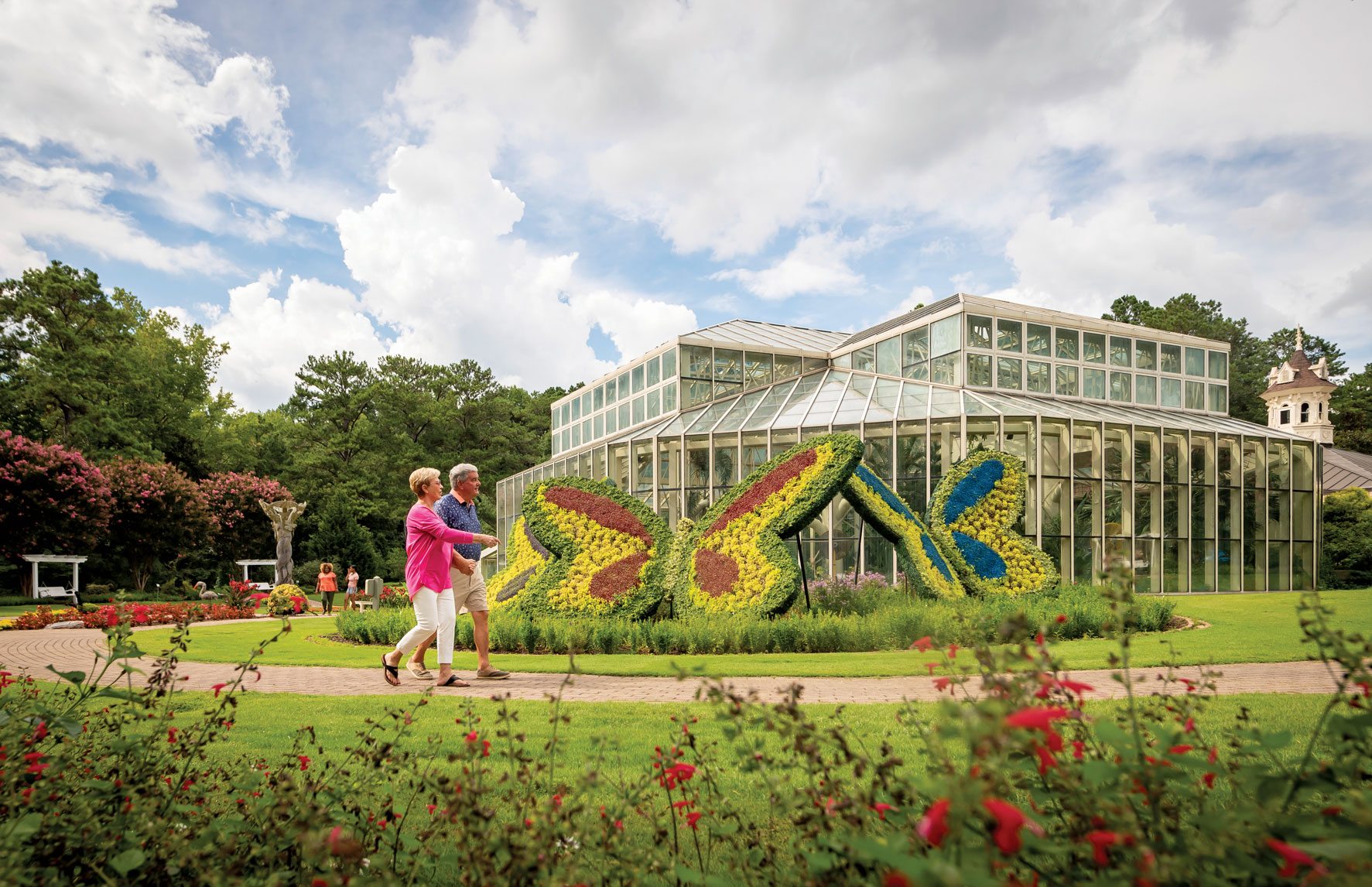 Running through mid-September until November 1 is Pumpkins at Callaway, a seasonal display featuring fields of sunflowers, thousands of pumpkins, and Cason’s Corn Maze. The fun continues into the evening with twinkling lights and glowing gourds. There are few overnight lodging options at Callaway, perhaps most notable being the 150-room Lodge & Spa. A Four-diamond property features numerous upscale amenities and each room and suite offers a balcony with views of a serene lake, gardens or woods.
Running through mid-September until November 1 is Pumpkins at Callaway, a seasonal display featuring fields of sunflowers, thousands of pumpkins, and Cason’s Corn Maze. The fun continues into the evening with twinkling lights and glowing gourds. There are few overnight lodging options at Callaway, perhaps most notable being the 150-room Lodge & Spa. A Four-diamond property features numerous upscale amenities and each room and suite offers a balcony with views of a serene lake, gardens or woods.
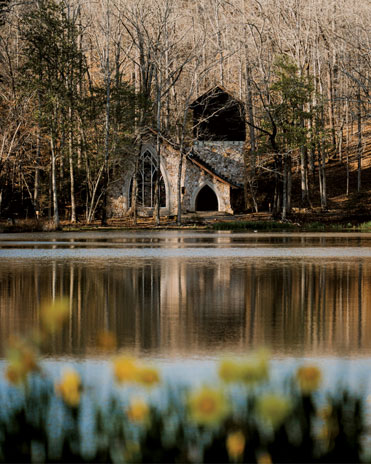 A few miles from Pine Mountain is Roosevelt’s Little White House. Now a National Historic Landmark, President Franklin D. Roosevelt built the house in 1932. He first visited Warm Springs and its 88-degree buoyant waters years earlier in hopes of finding a cure for the infantile paralysis that struck him in 1921. While posing for a portrait in the spring of 1945, FDR suffered a cerebral hemorrhage and died. Today, that unfinished portrait is included in the site’s museum, including his 1938 Ford convertible with hand controls.
A few miles from Pine Mountain is Roosevelt’s Little White House. Now a National Historic Landmark, President Franklin D. Roosevelt built the house in 1932. He first visited Warm Springs and its 88-degree buoyant waters years earlier in hopes of finding a cure for the infantile paralysis that struck him in 1921. While posing for a portrait in the spring of 1945, FDR suffered a cerebral hemorrhage and died. Today, that unfinished portrait is included in the site’s museum, including his 1938 Ford convertible with hand controls.
DAHLONEGA
The first major gold rush in the United States wasn’t in California. No, in 1828, more than 20 years before the boom out west, many looking to strike it rich flocked to the Georgia hills. The tiny town of Dahlonega welcomed an influx of gold prospectors after it was discovered to be the site of the largest gold deposits east of the Mississippi River. Today, some of that gold is found atop the shining dome of the state’s capitol building in Atlanta.
 The rush of miners is long past. However, their spirit lives on in the mines they left behind and the annual Gold Rush Days, a festival held the third weekend in October. More than 200 arts and crafts vendors gather in the town’s Historic Square as part of the festivities including a parade, cloggers and square dancers, live music, kids games and more. You can even try your luck at gold panning.
The rush of miners is long past. However, their spirit lives on in the mines they left behind and the annual Gold Rush Days, a festival held the third weekend in October. More than 200 arts and crafts vendors gather in the town’s Historic Square as part of the festivities including a parade, cloggers and square dancers, live music, kids games and more. You can even try your luck at gold panning.
This patch of the Peach State also claims the title as the official wine country of Georgia. One of the most highly acclaimed wine regions in the South, it was designated as the Dahlonega Plateau AVA (American Viticultural Area) in 2018. During the fall, many of the wineries present their latest vintages while, at the same time, offering beautiful views of the countryside and surrounding foliage. From hillside villas to craftsmen-style lodges, visitors can tour these distinctive winers to learn first-hand what it takes to coax grapes from the ground to the glass.
 Speaking of the countryside: It’s laced with more than 20 hiking trails, particularly the Chattahoochee National Forest. In fact, Dahlonega is the closest town to the southern terminus of the Appalachian Trail. And speaking of walking: autumn is the ideal season for a ghost tour. The town is said to have a very haunted history thanks to it’s gold-rush period, the Civil War and the Trail of Tears. Stories of soldiers playing cards in Mount Hope Cemetery, ghostly apparitions in long white dresses, dishes and glasses rattling in the restaurants in the Public Square—the tales of otherworldly activity are numerous.
Speaking of the countryside: It’s laced with more than 20 hiking trails, particularly the Chattahoochee National Forest. In fact, Dahlonega is the closest town to the southern terminus of the Appalachian Trail. And speaking of walking: autumn is the ideal season for a ghost tour. The town is said to have a very haunted history thanks to it’s gold-rush period, the Civil War and the Trail of Tears. Stories of soldiers playing cards in Mount Hope Cemetery, ghostly apparitions in long white dresses, dishes and glasses rattling in the restaurants in the Public Square—the tales of otherworldly activity are numerous.
TIFTON
When your nickname is “The Friendly City,” residents know they have a lot to live up to. The good folks of Tifton—about 17,000 of them—wholeheartedly embrace the moniker. It’s been on the map since the late 1800s and was originally established as a railroad hub for transporting timber, tobacco, cotton and peaches across the Southeast. Agriculture is still the main industry here, but more and more travelers are discovering the town because of its warm hospitality and special events such as the annual Arts Affair, set for November 1 this year. The celebration of all things creative and crafty features live music, vendors, kids games and food trucks.
 The Georgia Museum of Agriculture and Historic Village is living time capsule that takes guests back into the 19th century with two working farmsteads, cotton gin, sawmill, grist mill, print shop, drug store, steam train, country store and a Victorian home. Adding to the atmosphere are costumed interpreters who share stories about Georgia’s rural heritage. Visitors can watch a blacksmith swing his hammer, and see the sparks fly. Turn the grindstone at the Grist Mill. Learn how women made soap and cooked without electricity. And no trip here is complete without stopping at the drug store to shop for penny candy and have ice cream from the antique soda fountain. It’s open year-round, Tuesday-Saturday.
The Georgia Museum of Agriculture and Historic Village is living time capsule that takes guests back into the 19th century with two working farmsteads, cotton gin, sawmill, grist mill, print shop, drug store, steam train, country store and a Victorian home. Adding to the atmosphere are costumed interpreters who share stories about Georgia’s rural heritage. Visitors can watch a blacksmith swing his hammer, and see the sparks fly. Turn the grindstone at the Grist Mill. Learn how women made soap and cooked without electricity. And no trip here is complete without stopping at the drug store to shop for penny candy and have ice cream from the antique soda fountain. It’s open year-round, Tuesday-Saturday.
 One of the area’s best farms is the Market at Rutland Farms, which has blueberries, blackberries, peaches, squash, and other produce grown right here. Visitors can tour the fields on a “field trip” and pick their own items or shop for them in the store. There’s even a petting zoo and other seasonal attractions. While at Rutland this fall, get lost in the giant, 25-acre corn maze. Visitors can light up the dark with flashlight nights inside the maze or, for tiny explorers, check out our mini maze designed with toddlers in mind. The maze features a new design each year that includes an interactive scavenger hunt to tackle while navigating your way through the maze. The maze is open Monday-Friday, September 29-November 14. Admission is $8 per person.
One of the area’s best farms is the Market at Rutland Farms, which has blueberries, blackberries, peaches, squash, and other produce grown right here. Visitors can tour the fields on a “field trip” and pick their own items or shop for them in the store. There’s even a petting zoo and other seasonal attractions. While at Rutland this fall, get lost in the giant, 25-acre corn maze. Visitors can light up the dark with flashlight nights inside the maze or, for tiny explorers, check out our mini maze designed with toddlers in mind. The maze features a new design each year that includes an interactive scavenger hunt to tackle while navigating your way through the maze. The maze is open Monday-Friday, September 29-November 14. Admission is $8 per person.
BANNING MILLS
For those who have never been on a zip line obstacle course, the first thing to understand is that they can be extremely physically taxing. Climbing, swinging, balancing while navigating various impediments high up in the trees is a challenge. And perhaps no place is more challenging than Historic Banning Mills, located near the tiny town of Whitesburg, southwest of Atlanta. Those daring enough are greeted by obstacles and thrills such as a 1,500-foot high-speed zip called Big Daddy, a 600-foot suspension bridge, and eight skybridge up to 80 feet high—and that’s all on one course.
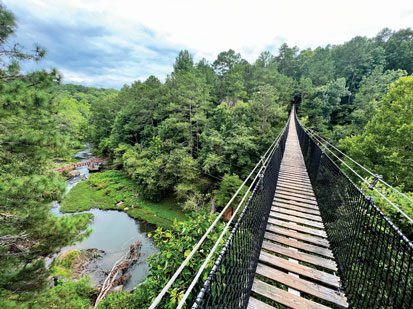 Nestled in the rugged woods of Snake Creek Gorge, the property covers more than 500 acres of wilderness peppered with historical points of interest. Banning Mills holds the world record for the longest zip line canopy tour and tallest free-standing rock wall in the world—yes, that is two certified Guinness World Records. Additional utdoor adventure options include, kayaking, Eco-Spider Swincar tours, hiking trails with suspension bridges, and horseback riding.
Nestled in the rugged woods of Snake Creek Gorge, the property covers more than 500 acres of wilderness peppered with historical points of interest. Banning Mills holds the world record for the longest zip line canopy tour and tallest free-standing rock wall in the world—yes, that is two certified Guinness World Records. Additional utdoor adventure options include, kayaking, Eco-Spider Swincar tours, hiking trails with suspension bridges, and horseback riding.
Guests can hike along the remnants of old roads, Native Creek paths, and old water raceways. Trails wind through the forest and along the Snake Creek, where one can explore the ruins of three mills dating to the 1860s. Keep an eye out for alligator snapping turtles, piebald deer, groundhogs, flying squirrels and river otters.
 Overnight guests have a range of options. A collection of pine log cabins sleep up to four people, while even larger cabins can host six to nine. The tree house village includes double-decker houses propped high on stilts and accessed by private suspension bridges. Plus, there’s the historic lodge that is both rustic and accommodating with gas-log fireplaces, jetted tubs, a gift shop and dining hall.
Overnight guests have a range of options. A collection of pine log cabins sleep up to four people, while even larger cabins can host six to nine. The tree house village includes double-decker houses propped high on stilts and accessed by private suspension bridges. Plus, there’s the historic lodge that is both rustic and accommodating with gas-log fireplaces, jetted tubs, a gift shop and dining hall.
The property hosts a pair of Moonlight Zip Line Tour this fall, October 18 and 31. The 2.5-hour tours run between 7 PM and 9:30 PM, leaving in groups about every 30 minutes.
MILLEDGEVILLE
Tucked between Macon and Augusta is Milledgeville, a destination that combines all the things we love about small towns—old buildings and parks, historic sites, oak-lined streets, stunning architecture, small shops and family eateries. There’s the old Governor’s Mansion, a restored structure from when the town served as Georgia’s fourth state capital, 1803-1868. Plus, there’s Andalusia Farm, home of acclaimed Southern Gothic author Flannery O’Connor. And don’t leave town without a ride on the Historic Trolley Tour. The hour-long excursion (Thursday-Saturdays, 10 AM, $12) provides a narrated tour through downtown Milledgeville.
 Outside of town is Lockerly Arboretum, where paved trails wind through towering trees and serene picnic spots. Admission to the grounds is free, and guided tours of the property’s Rose Hill mansion, built in the 1850s, are just $5 per person on Saturdays (10 AM-3 PM) through November. Guests are invited to bring a picnic lunch to eat at tables near a picturesque pond. More natural wonder is ready and waiting at Lake Sinclair, a freshwater hotspot for boating, kayaking and fishing.
Outside of town is Lockerly Arboretum, where paved trails wind through towering trees and serene picnic spots. Admission to the grounds is free, and guided tours of the property’s Rose Hill mansion, built in the 1850s, are just $5 per person on Saturdays (10 AM-3 PM) through November. Guests are invited to bring a picnic lunch to eat at tables near a picturesque pond. More natural wonder is ready and waiting at Lake Sinclair, a freshwater hotspot for boating, kayaking and fishing.
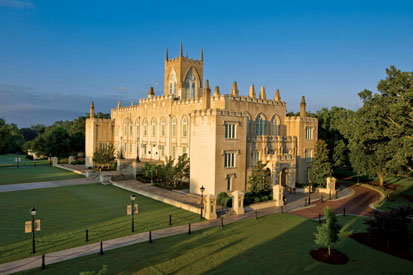 The Deep Roots Festival returns for its 22nd edition on Saturday, October 18. The streets of Downtown are lined with antique cars, performance stages for magicians and musicians, an artists’ market and food trucks. Funnel cakes, grilled sausages, street tacos—yes, please. Also, in keeping with the season, the Ghost of Milledgeville twilight walking tours are held on select Friday evenings, October 3, 17 and 31. Tours begin at 5:30 PM and are only $12 per person, though advanced reservations are encouraged.
The Deep Roots Festival returns for its 22nd edition on Saturday, October 18. The streets of Downtown are lined with antique cars, performance stages for magicians and musicians, an artists’ market and food trucks. Funnel cakes, grilled sausages, street tacos—yes, please. Also, in keeping with the season, the Ghost of Milledgeville twilight walking tours are held on select Friday evenings, October 3, 17 and 31. Tours begin at 5:30 PM and are only $12 per person, though advanced reservations are encouraged.

















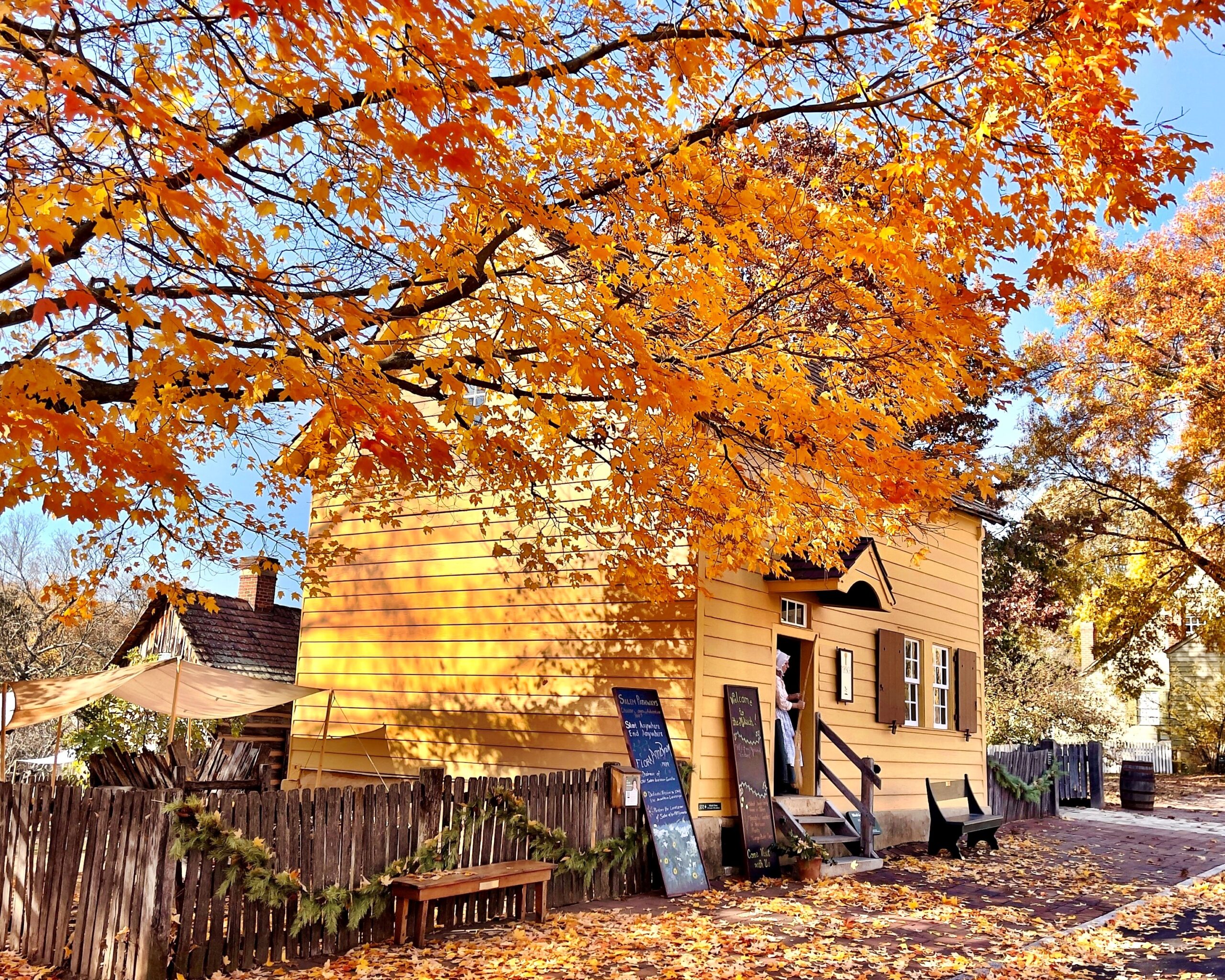


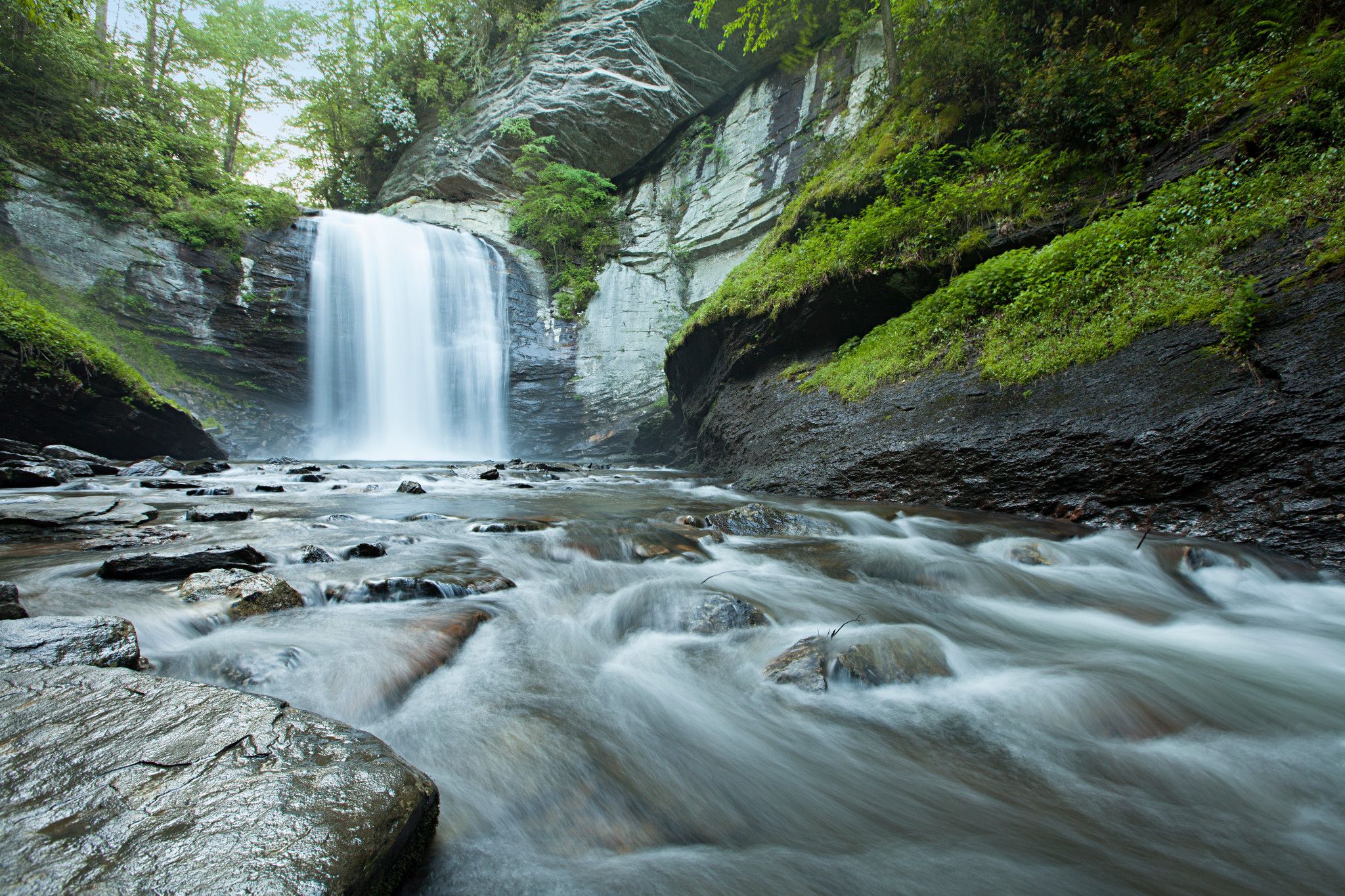

 Strange But True Stories from Across the Sunshine State
Strange But True Stories from Across the Sunshine State



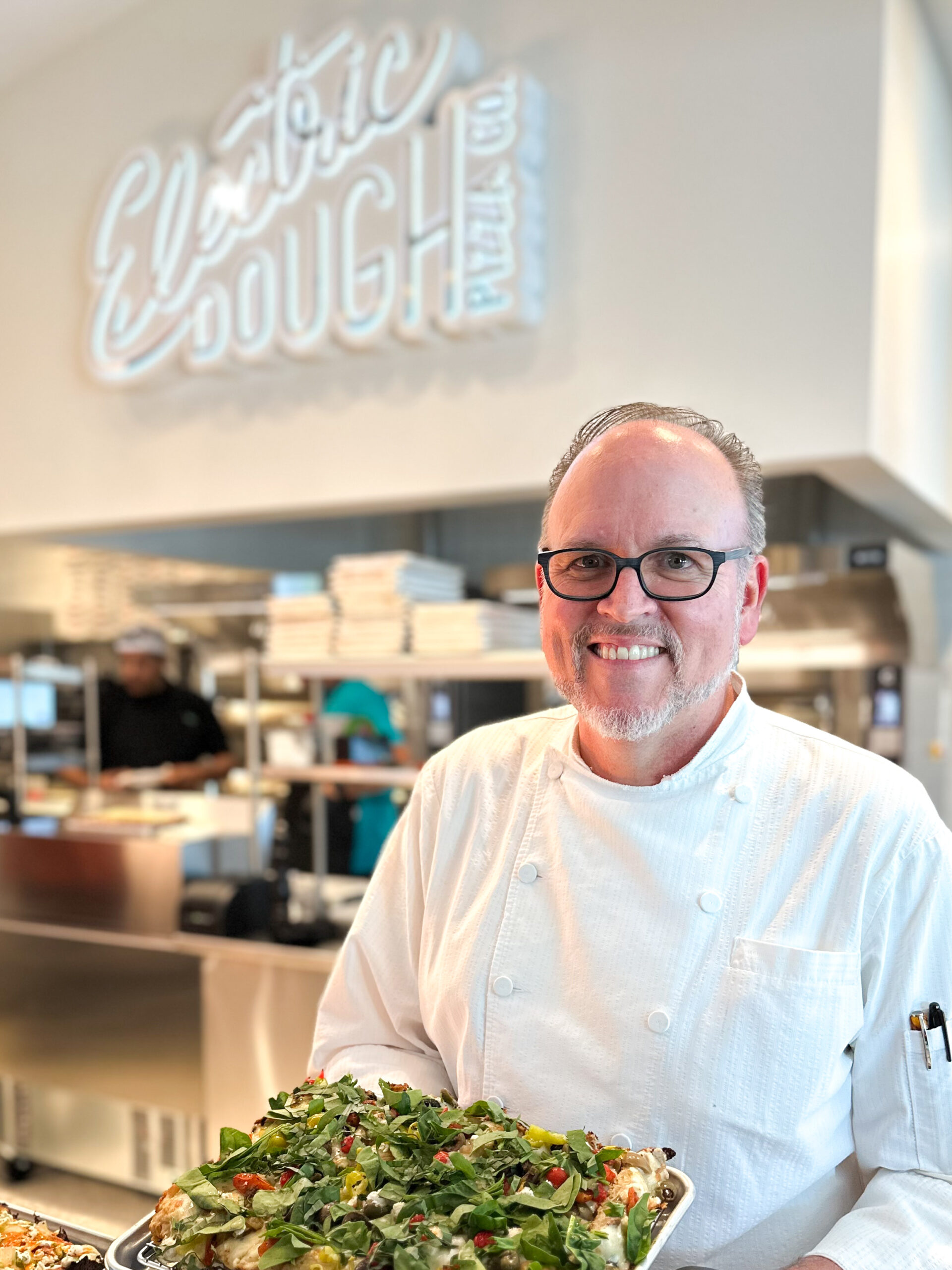
 If you’re looking for authentic Mexican flavors, Ajua (pronounced ah-HOO-ah) in Jacksonville Beach is the place. The deep, rich earth tones that grace the dining room are easy on the eyes, allowing you to focus on the flavors and textures of your meal—everything made in house and from scratch. While their quesabirria tacos ($18) and huitlacoche quesadilla ($17) are top sellers, other more intriguing selections includes the pan de aire nachos ($12)—a puffed air bread stuffed with nacho toppings, and the flavor-forward 32-oz. Tomahawk steak ($96) topped with chipotle/adobo butter. On game days, check out the Mexican-inspired wings and sliders.
If you’re looking for authentic Mexican flavors, Ajua (pronounced ah-HOO-ah) in Jacksonville Beach is the place. The deep, rich earth tones that grace the dining room are easy on the eyes, allowing you to focus on the flavors and textures of your meal—everything made in house and from scratch. While their quesabirria tacos ($18) and huitlacoche quesadilla ($17) are top sellers, other more intriguing selections includes the pan de aire nachos ($12)—a puffed air bread stuffed with nacho toppings, and the flavor-forward 32-oz. Tomahawk steak ($96) topped with chipotle/adobo butter. On game days, check out the Mexican-inspired wings and sliders. Another newcomer to Jax Beach is Izakaya Ko, serving a wide variety of Japanese style tapas in a visually engaging and casual space. Whether your selections are hot, cold, yakitori or sushi, everything is expertly prepared, beautifully presented and full of flavor. Along with an eclectic selection of sakes, beers and wines, you’ll be hard pressed to find anything comparable along the coast. Chef Adi Wiriwan recommends the crab fried rice ($14) with blue crab, garlic confit, green onion; Takoyaki ($8) served with Japanese aioli, sweet soy, bonito flakes, kizami nori; and Chirashi ($28) with six pieces of sashimi over sushi rice.
Another newcomer to Jax Beach is Izakaya Ko, serving a wide variety of Japanese style tapas in a visually engaging and casual space. Whether your selections are hot, cold, yakitori or sushi, everything is expertly prepared, beautifully presented and full of flavor. Along with an eclectic selection of sakes, beers and wines, you’ll be hard pressed to find anything comparable along the coast. Chef Adi Wiriwan recommends the crab fried rice ($14) with blue crab, garlic confit, green onion; Takoyaki ($8) served with Japanese aioli, sweet soy, bonito flakes, kizami nori; and Chirashi ($28) with six pieces of sashimi over sushi rice.
 The crew’s information about the storm into which they’d soon steer directly was inconsistent. They didn’t realize that a clerical error had caused them to receive the same storm report twice. The information was 18 hours old and described a system heading north when in fact Hurricane Joaquin was slowly moving southwest. In reality, Joaquin was a nine mile-tall storm engine hovering over the fuel of warm waters. The captain was right when he thought the storm seemed to be “festering.”
The crew’s information about the storm into which they’d soon steer directly was inconsistent. They didn’t realize that a clerical error had caused them to receive the same storm report twice. The information was 18 hours old and described a system heading north when in fact Hurricane Joaquin was slowly moving southwest. In reality, Joaquin was a nine mile-tall storm engine hovering over the fuel of warm waters. The captain was right when he thought the storm seemed to be “festering.” The El Faro Memorial beneath the Dames Point Bridge seems lonely this September morning, a week and a half before the 10th anniversary of one of the worst maritime disasters in U.S. history, the deadliest in decades. El Faro is Spanish for “the lighthouse,” and the memorial makes for odd dimensions and juxtapositions: a 10 foot-tall lighthouse standing beneath the bridge and covered in graffiti. “Jesus saves,” someone scrawled. “Shaun and Jessica,” whoever they are, superimposed their names on the memory of the disaster.
The El Faro Memorial beneath the Dames Point Bridge seems lonely this September morning, a week and a half before the 10th anniversary of one of the worst maritime disasters in U.S. history, the deadliest in decades. El Faro is Spanish for “the lighthouse,” and the memorial makes for odd dimensions and juxtapositions: a 10 foot-tall lighthouse standing beneath the bridge and covered in graffiti. “Jesus saves,” someone scrawled. “Shaun and Jessica,” whoever they are, superimposed their names on the memory of the disaster. Families of the 33 sailors, including five Polish repair workers on board because the ship’s owners wouldn’t lose profits by allowing downtime at port, all filed lawsuits against TOTE Maritime, which settled most of them. In 2016, TOTE approached Jacksonville City Council about installing a lighthouse statue and refurbishing bathrooms at the neglected city park beneath the Dames Point Bridge.
Families of the 33 sailors, including five Polish repair workers on board because the ship’s owners wouldn’t lose profits by allowing downtime at port, all filed lawsuits against TOTE Maritime, which settled most of them. In 2016, TOTE approached Jacksonville City Council about installing a lighthouse statue and refurbishing bathrooms at the neglected city park beneath the Dames Point Bridge.

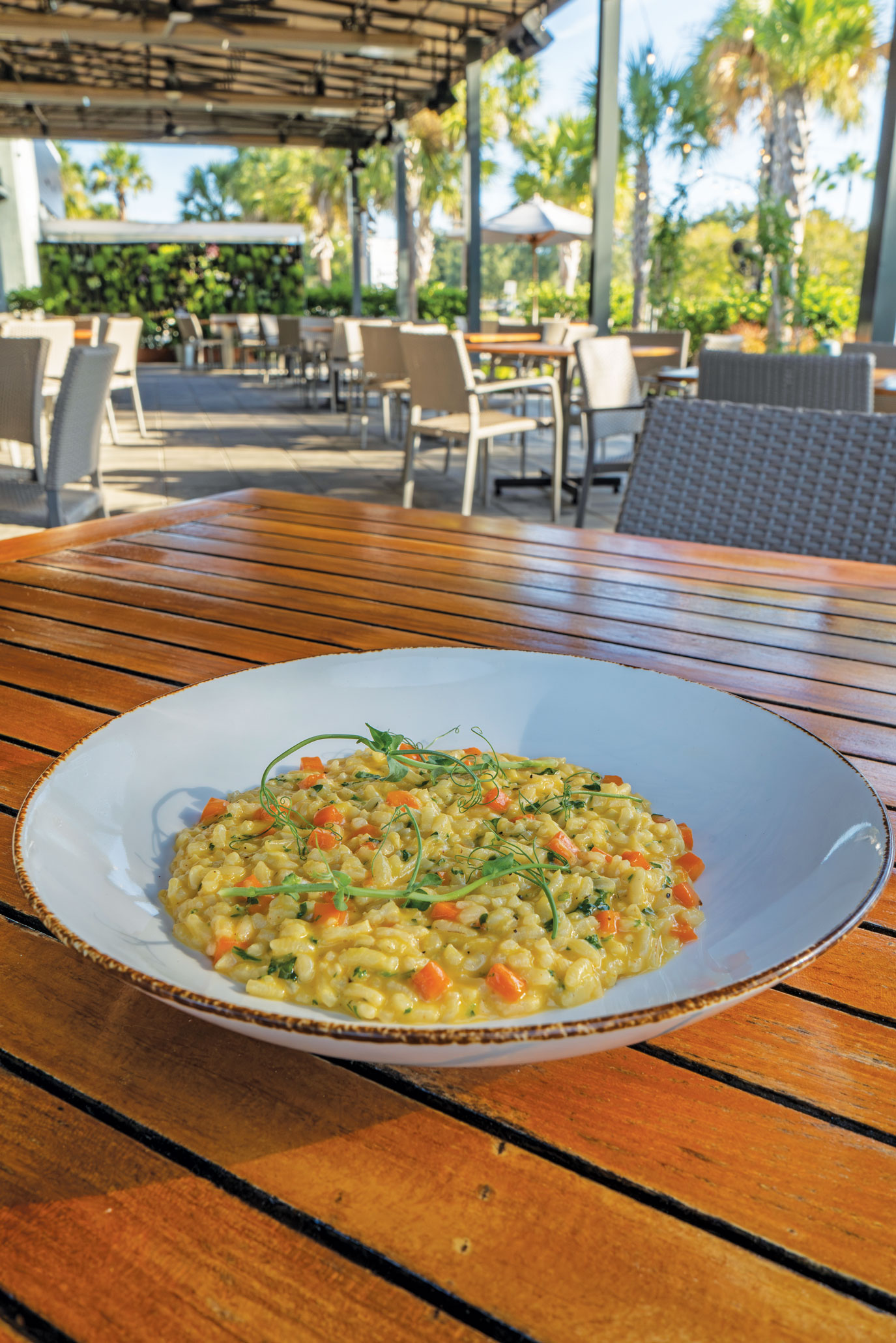




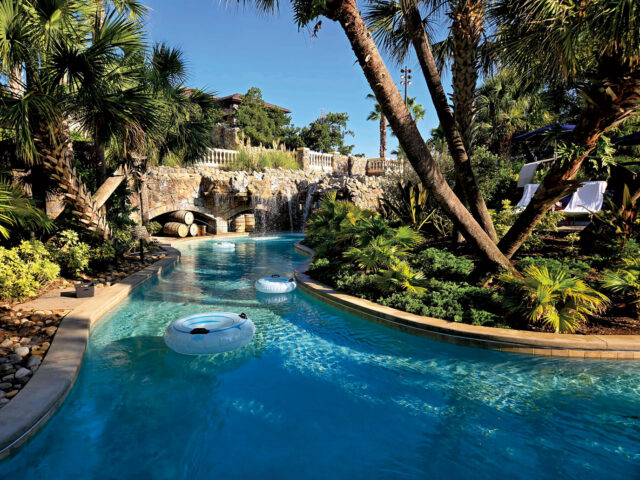








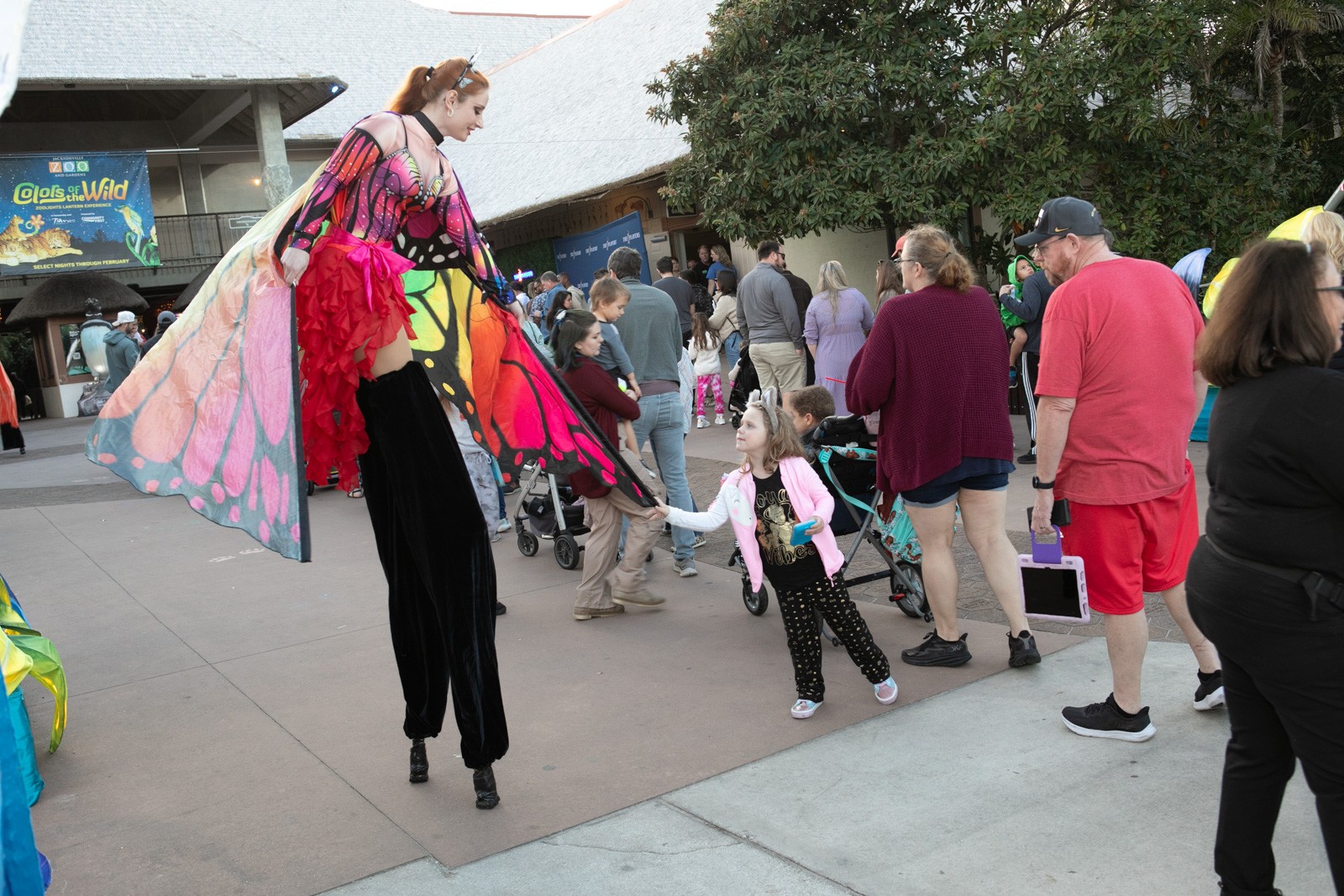 More than a night of dazzling lights, ROARS and More is an evening with heart. Guests of all ages will wander through more than 1,000 brilliant lantern displays featuring radiant plants and whimsical animals. Children delight in each magical loop, while unforgettable encounters—like feeding the giraffes or petting stingrays—create memories that last a lifetime.
More than a night of dazzling lights, ROARS and More is an evening with heart. Guests of all ages will wander through more than 1,000 brilliant lantern displays featuring radiant plants and whimsical animals. Children delight in each magical loop, while unforgettable encounters—like feeding the giraffes or petting stingrays—create memories that last a lifetime.
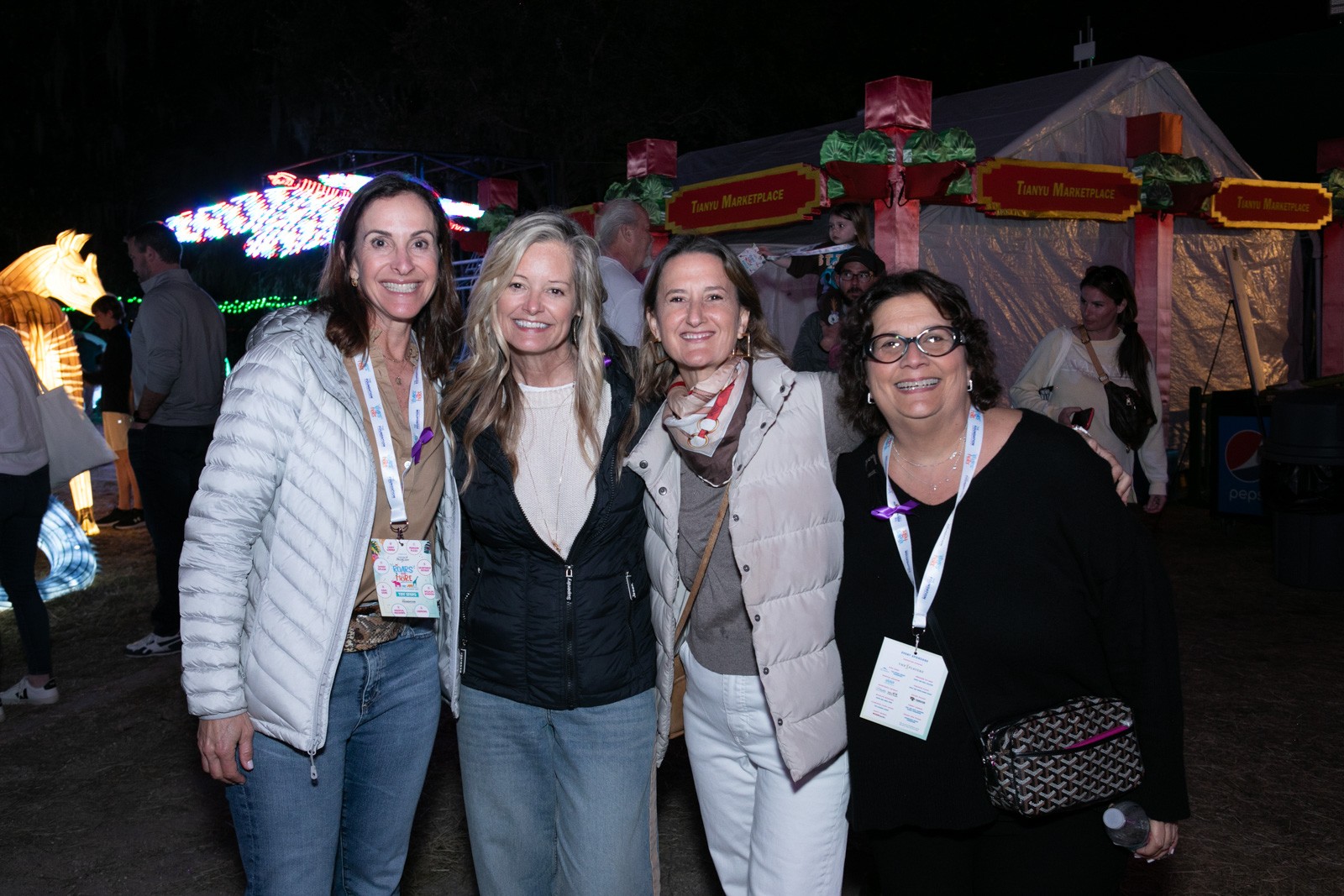

 Keene’s technical skill and creative eye are on display for Echoes of the Wild, an exhibition soon to be hanging at the Lightner Museum in St. Augustine. The show brings together the historic artistry of nineteenth century wet plate photography and a modern call for conservation. Created during backcountry explorations across the Southeast, Keene’s unique images offer haunting glimpses of landscapes and wildlife under threat from human development. According to the photographer, the wet plate process and the medium’s inherent imperfections—cracks, streaks, chemical anomalies—echo the vulnerability of the natural world, offering a metaphor for the shifting state of the ecosystems it portrays.
Keene’s technical skill and creative eye are on display for Echoes of the Wild, an exhibition soon to be hanging at the Lightner Museum in St. Augustine. The show brings together the historic artistry of nineteenth century wet plate photography and a modern call for conservation. Created during backcountry explorations across the Southeast, Keene’s unique images offer haunting glimpses of landscapes and wildlife under threat from human development. According to the photographer, the wet plate process and the medium’s inherent imperfections—cracks, streaks, chemical anomalies—echo the vulnerability of the natural world, offering a metaphor for the shifting state of the ecosystems it portrays.  The wet collodion process represents one of the earliest forms of photography and was widely used into the late 19th Century. Because the process was relatively inexpensive, a tintype was the first photograph many people ever had taken of themselves. By the mid-20th Century, new and more convenient techniques and commercially manufactured films led to a rapid decline in this form of photography. Tintype studios soon disappeared. However, once varnished, tintype photos have been known to last more than 100 years.
The wet collodion process represents one of the earliest forms of photography and was widely used into the late 19th Century. Because the process was relatively inexpensive, a tintype was the first photograph many people ever had taken of themselves. By the mid-20th Century, new and more convenient techniques and commercially manufactured films led to a rapid decline in this form of photography. Tintype studios soon disappeared. However, once varnished, tintype photos have been known to last more than 100 years. 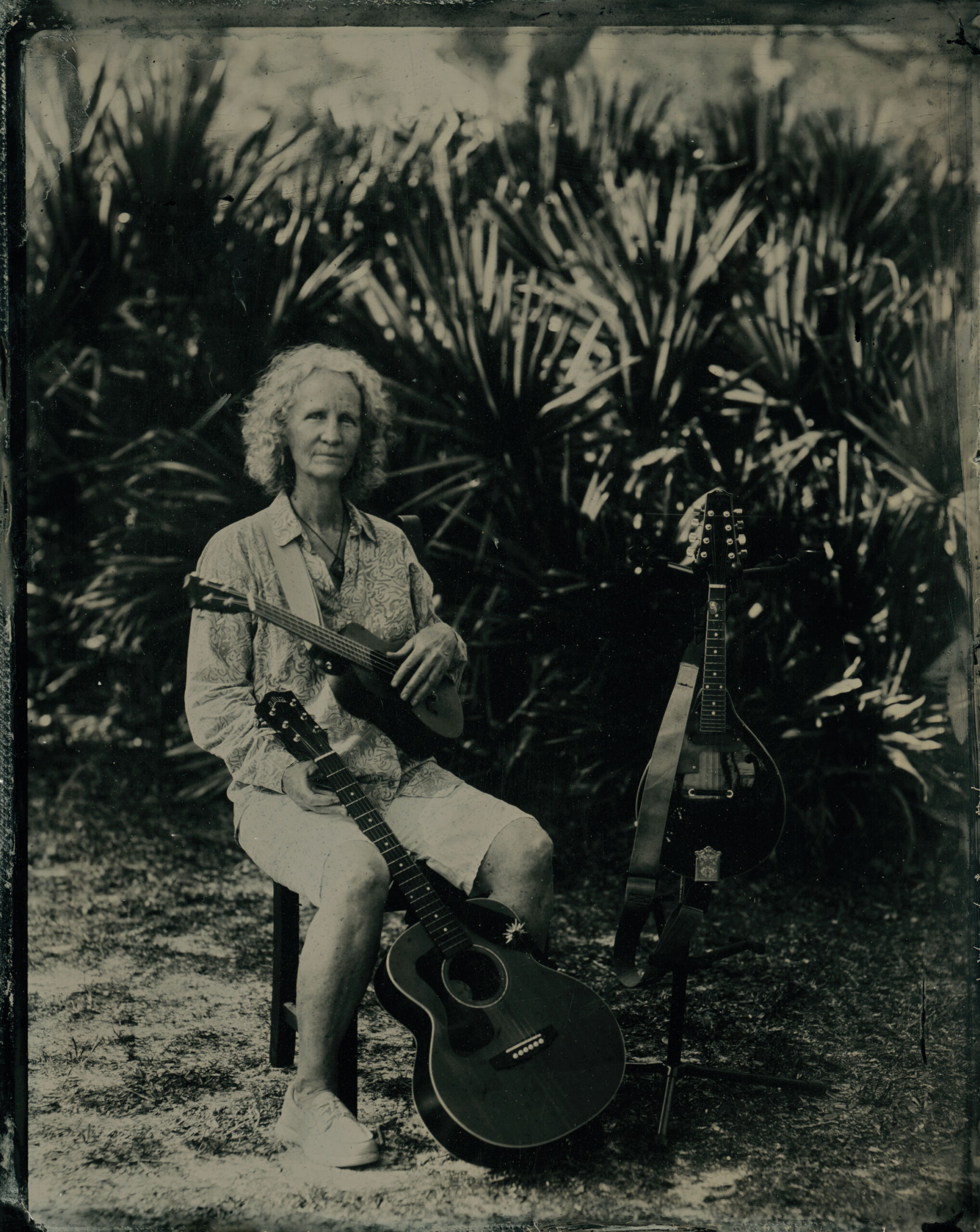 “Each photograph is made and developed within twenty minutes,” says Keene. “A single exposure might last from one second to 10 minutes outdoors. Once the exposure is made, I immediately develop, fix and wash the image. Washing the plate takes about an hour, and then I dry and varnish the photograph. So, a single photograph may take two or three hours to shoot and process.”
“Each photograph is made and developed within twenty minutes,” says Keene. “A single exposure might last from one second to 10 minutes outdoors. Once the exposure is made, I immediately develop, fix and wash the image. Washing the plate takes about an hour, and then I dry and varnish the photograph. So, a single photograph may take two or three hours to shoot and process.” “I fall more in love with this process the more I learn about it,” he continues. “It’s an ongoing puzzle, where the chemistry is unique to each moment a photograph is made and where my own physical behavior directly influences how that photograph is made. I enjoy the immediacy of seeing an image, and then deciding from there what needs to be adjusted to make that photograph better. And then repeating the process until I get the photo that I’m looking to achieve. In my portrait work, I appreciate that wet plate photography was the first time in history where most ordinary people had an opportunity to be photographed. It was an equitable process that gave us photographs that have lasted more than a century. To see a person’s eyes in a wet plate portrait is unlike any other photograph. There’s a depth and beauty in the silver. Lastly, I admire the early photographers who used wet plate photography to help encourage our country’s earliest conservation protections. It was mammoth wet plate photographs, made on glass and delivered to Washington, that allowed legislators to see, for the first time, wild, remote and difficult to access areas of America.”
“I fall more in love with this process the more I learn about it,” he continues. “It’s an ongoing puzzle, where the chemistry is unique to each moment a photograph is made and where my own physical behavior directly influences how that photograph is made. I enjoy the immediacy of seeing an image, and then deciding from there what needs to be adjusted to make that photograph better. And then repeating the process until I get the photo that I’m looking to achieve. In my portrait work, I appreciate that wet plate photography was the first time in history where most ordinary people had an opportunity to be photographed. It was an equitable process that gave us photographs that have lasted more than a century. To see a person’s eyes in a wet plate portrait is unlike any other photograph. There’s a depth and beauty in the silver. Lastly, I admire the early photographers who used wet plate photography to help encourage our country’s earliest conservation protections. It was mammoth wet plate photographs, made on glass and delivered to Washington, that allowed legislators to see, for the first time, wild, remote and difficult to access areas of America.”
 In Mandarin, you’ll find the equally informal Salento Colombian Steakhouse. While they serve plenty of steaks, including a 16 oz. ribeye ($44) and 16 oz. New York Strip, there’s considerably more. Factoring in their Colombian roots, the menu also includes traditional arepas, empanadas and plantains. If you’re in the mood for Colombian specialties, the Bandeja Paisa ($26), featuring carne asada, chorizo, pork rind, arepa and fried sweet plantain, delivers a wonderful ethnic experience.
In Mandarin, you’ll find the equally informal Salento Colombian Steakhouse. While they serve plenty of steaks, including a 16 oz. ribeye ($44) and 16 oz. New York Strip, there’s considerably more. Factoring in their Colombian roots, the menu also includes traditional arepas, empanadas and plantains. If you’re in the mood for Colombian specialties, the Bandeja Paisa ($26), featuring carne asada, chorizo, pork rind, arepa and fried sweet plantain, delivers a wonderful ethnic experience. Similarly, City Grille & Raw Bar offers everything you’d expect from a traditional steak house. Their bar is a great place to start, perhaps sipping martinis and slurping freshly shucked oysters. Their dining rooms vary in design, one a bit formal, another garden inspired. If yours is a hot date, ask for an intimate table for two in their “tree house.” Everything on the menu, from the top-shelf wine list and fresh selections at the raw bar, to their Ora King salmon tartare ($17) and 18 oz. hand-cut prime ribeye ($66), is sure to impress.
Similarly, City Grille & Raw Bar offers everything you’d expect from a traditional steak house. Their bar is a great place to start, perhaps sipping martinis and slurping freshly shucked oysters. Their dining rooms vary in design, one a bit formal, another garden inspired. If yours is a hot date, ask for an intimate table for two in their “tree house.” Everything on the menu, from the top-shelf wine list and fresh selections at the raw bar, to their Ora King salmon tartare ($17) and 18 oz. hand-cut prime ribeye ($66), is sure to impress.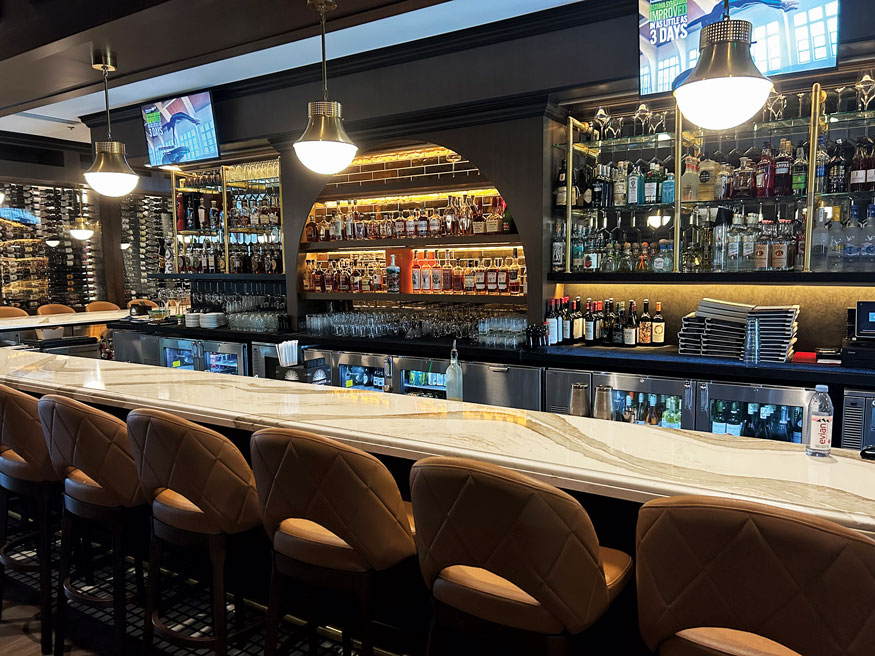 Opened late last year by the same folks that operate Chophouse Thirteen, Chophouse at Nocatee offers a modern approach to steakhouse dining. With an open-air rooftop, elegantly appointed dining spaces and extensive menu, there’s something for every occasion. Excellent choices include Wagyu carpaccio ($28), Hawaiian Bigeye tuna tartare, and a 6 oz. filet mignon ($48).
Opened late last year by the same folks that operate Chophouse Thirteen, Chophouse at Nocatee offers a modern approach to steakhouse dining. With an open-air rooftop, elegantly appointed dining spaces and extensive menu, there’s something for every occasion. Excellent choices include Wagyu carpaccio ($28), Hawaiian Bigeye tuna tartare, and a 6 oz. filet mignon ($48). Just opened in the Deerwood area, 14 Prime is undeniably stylish, pays impeccable attention to detail, delivers personalized service, and proves its culinary prowess with every dish. If you like to watch the kitchen in action, book one of the limited seats at the Chef’s Table. Creatively conceived cocktails, including their Cloud Nine, topped with a bubbly head of mulled wine air ($21), are delicious and entertaining. Don’t miss their wild Burgundy escargot pot pie ($27), hand-stretched mozzarella prepared tableside, and a 12 oz. Booth Creek Farm Kansas strip ($135). Check, please.
Just opened in the Deerwood area, 14 Prime is undeniably stylish, pays impeccable attention to detail, delivers personalized service, and proves its culinary prowess with every dish. If you like to watch the kitchen in action, book one of the limited seats at the Chef’s Table. Creatively conceived cocktails, including their Cloud Nine, topped with a bubbly head of mulled wine air ($21), are delicious and entertaining. Don’t miss their wild Burgundy escargot pot pie ($27), hand-stretched mozzarella prepared tableside, and a 12 oz. Booth Creek Farm Kansas strip ($135). Check, please. 
 The highest peak in Georgia, Brasstown Bald, is only a short drive from the center of town. Intrepid explorers can walk up the 1.2-mile trail to the top. There’s also a shuttle, ferrying visitors up and down the mountain. At the top, savor the 360-degree views of four states—Georgia, Tennessee, North Carolina and South Carolina. Autumn sunsets are particularly beautiful.
The highest peak in Georgia, Brasstown Bald, is only a short drive from the center of town. Intrepid explorers can walk up the 1.2-mile trail to the top. There’s also a shuttle, ferrying visitors up and down the mountain. At the top, savor the 360-degree views of four states—Georgia, Tennessee, North Carolina and South Carolina. Autumn sunsets are particularly beautiful.  The tidy Downtown charms with locally owned shops and restaurants circling the historic Union County Courthouse, now a museum highlighting local and Native American history. Thirsty? Take a sip or two at Odom Springs Winery, sample some moonshine at Grandaddy Mimms Distilling Co., or share a pint at Blairsville Brewing Company.
The tidy Downtown charms with locally owned shops and restaurants circling the historic Union County Courthouse, now a museum highlighting local and Native American history. Thirsty? Take a sip or two at Odom Springs Winery, sample some moonshine at Grandaddy Mimms Distilling Co., or share a pint at Blairsville Brewing Company. The Chattahoochee is the town’s defining natural feature. As such, the river plays a key role in much of the fun found in Columbus. Here, the Riverwalk hugs the bank of the river for some 15 miles of linear park. (Hey, Jacksonville, are you paying attention?). Oh, and there is the world’s longest urban whitewater rafting course, plus plenty of tamer waters for kayaking and stand-up paddleboarding. And, if that’s not enough, visitors can cycle, hike, fish or picnic in a peaceful waterside park.
The Chattahoochee is the town’s defining natural feature. As such, the river plays a key role in much of the fun found in Columbus. Here, the Riverwalk hugs the bank of the river for some 15 miles of linear park. (Hey, Jacksonville, are you paying attention?). Oh, and there is the world’s longest urban whitewater rafting course, plus plenty of tamer waters for kayaking and stand-up paddleboarding. And, if that’s not enough, visitors can cycle, hike, fish or picnic in a peaceful waterside park. The walkable Uptown district features more than 25 locally owned restaurants and bars, including a few rooftop spots ideal for a crisp autumn evening. Each Saturday, three blocks along Broadway host over 100 local and regional vendors. From 9 AM to noon, visitors can expect to find fresh and organic produce, home goods, jewelry, unique crafts, and baked goods.
The walkable Uptown district features more than 25 locally owned restaurants and bars, including a few rooftop spots ideal for a crisp autumn evening. Each Saturday, three blocks along Broadway host over 100 local and regional vendors. From 9 AM to noon, visitors can expect to find fresh and organic produce, home goods, jewelry, unique crafts, and baked goods. Running through mid-September until November 1 is Pumpkins at Callaway, a seasonal display featuring fields of sunflowers, thousands of pumpkins, and Cason’s Corn Maze. The fun continues into the evening with twinkling lights and glowing gourds. There are few overnight lodging options at Callaway, perhaps most notable being the 150-room Lodge & Spa. A Four-diamond property features numerous upscale amenities and each room and suite offers a balcony with views of a serene lake, gardens or woods.
Running through mid-September until November 1 is Pumpkins at Callaway, a seasonal display featuring fields of sunflowers, thousands of pumpkins, and Cason’s Corn Maze. The fun continues into the evening with twinkling lights and glowing gourds. There are few overnight lodging options at Callaway, perhaps most notable being the 150-room Lodge & Spa. A Four-diamond property features numerous upscale amenities and each room and suite offers a balcony with views of a serene lake, gardens or woods.  A few miles from Pine Mountain is Roosevelt’s Little White House. Now a National Historic Landmark, President Franklin D. Roosevelt built the house in 1932. He first visited Warm Springs and its 88-degree buoyant waters years earlier in hopes of finding a cure for the infantile paralysis that struck him in 1921. While posing for a portrait in the spring of 1945, FDR suffered a cerebral hemorrhage and died. Today, that unfinished portrait is included in the site’s museum, including his 1938 Ford convertible with hand controls.
A few miles from Pine Mountain is Roosevelt’s Little White House. Now a National Historic Landmark, President Franklin D. Roosevelt built the house in 1932. He first visited Warm Springs and its 88-degree buoyant waters years earlier in hopes of finding a cure for the infantile paralysis that struck him in 1921. While posing for a portrait in the spring of 1945, FDR suffered a cerebral hemorrhage and died. Today, that unfinished portrait is included in the site’s museum, including his 1938 Ford convertible with hand controls.  The rush of miners is long past. However, their spirit lives on in the mines they left behind and the annual Gold Rush Days, a festival held the third weekend in October. More than 200 arts and crafts vendors gather in the town’s Historic Square as part of the festivities including a parade, cloggers and square dancers, live music, kids games and more. You can even try your luck at gold panning.
The rush of miners is long past. However, their spirit lives on in the mines they left behind and the annual Gold Rush Days, a festival held the third weekend in October. More than 200 arts and crafts vendors gather in the town’s Historic Square as part of the festivities including a parade, cloggers and square dancers, live music, kids games and more. You can even try your luck at gold panning.  Speaking of the countryside: It’s laced with more than 20 hiking trails, particularly the Chattahoochee National Forest. In fact, Dahlonega is the closest town to the southern terminus of the Appalachian Trail. And speaking of walking: autumn is the ideal season for a ghost tour. The town is said to have a very haunted history thanks to it’s gold-rush period, the Civil War and the Trail of Tears. Stories of soldiers playing cards in Mount Hope Cemetery, ghostly apparitions in long white dresses, dishes and glasses rattling in the restaurants in the Public Square—the tales of otherworldly activity are numerous.
Speaking of the countryside: It’s laced with more than 20 hiking trails, particularly the Chattahoochee National Forest. In fact, Dahlonega is the closest town to the southern terminus of the Appalachian Trail. And speaking of walking: autumn is the ideal season for a ghost tour. The town is said to have a very haunted history thanks to it’s gold-rush period, the Civil War and the Trail of Tears. Stories of soldiers playing cards in Mount Hope Cemetery, ghostly apparitions in long white dresses, dishes and glasses rattling in the restaurants in the Public Square—the tales of otherworldly activity are numerous.  The Georgia Museum of Agriculture and Historic Village is living time capsule that takes guests back into the 19th century with two working farmsteads, cotton gin, sawmill, grist mill, print shop, drug store, steam train, country store and a Victorian home. Adding to the atmosphere are costumed interpreters who share stories about Georgia’s rural heritage. Visitors can watch a blacksmith swing his hammer, and see the sparks fly. Turn the grindstone at the Grist Mill. Learn how women made soap and cooked without electricity. And no trip here is complete without stopping at the drug store to shop for penny candy and have ice cream from the antique soda fountain. It’s open year-round, Tuesday-Saturday.
The Georgia Museum of Agriculture and Historic Village is living time capsule that takes guests back into the 19th century with two working farmsteads, cotton gin, sawmill, grist mill, print shop, drug store, steam train, country store and a Victorian home. Adding to the atmosphere are costumed interpreters who share stories about Georgia’s rural heritage. Visitors can watch a blacksmith swing his hammer, and see the sparks fly. Turn the grindstone at the Grist Mill. Learn how women made soap and cooked without electricity. And no trip here is complete without stopping at the drug store to shop for penny candy and have ice cream from the antique soda fountain. It’s open year-round, Tuesday-Saturday. One of the area’s best farms is the Market at Rutland Farms, which has blueberries, blackberries, peaches, squash, and other produce grown right here. Visitors can tour the fields on a “field trip” and pick their own items or shop for them in the store. There’s even a petting zoo and other seasonal attractions. While at Rutland this fall, get lost in the giant, 25-acre corn maze. Visitors can light up the dark with flashlight nights inside the maze or, for tiny explorers, check out our mini maze designed with toddlers in mind. The maze features a new design each year that includes an interactive scavenger hunt to tackle while navigating your way through the maze. The maze is open Monday-Friday, September 29-November 14. Admission is $8 per person.
One of the area’s best farms is the Market at Rutland Farms, which has blueberries, blackberries, peaches, squash, and other produce grown right here. Visitors can tour the fields on a “field trip” and pick their own items or shop for them in the store. There’s even a petting zoo and other seasonal attractions. While at Rutland this fall, get lost in the giant, 25-acre corn maze. Visitors can light up the dark with flashlight nights inside the maze or, for tiny explorers, check out our mini maze designed with toddlers in mind. The maze features a new design each year that includes an interactive scavenger hunt to tackle while navigating your way through the maze. The maze is open Monday-Friday, September 29-November 14. Admission is $8 per person.  Nestled in the rugged woods of Snake Creek Gorge, the property covers more than 500 acres of wilderness peppered with historical points of interest. Banning Mills holds the world record for the longest zip line canopy tour and tallest free-standing rock wall in the world—yes, that is two certified Guinness World Records. Additional utdoor adventure options include, kayaking, Eco-Spider Swincar tours, hiking trails with suspension bridges, and horseback riding.
Nestled in the rugged woods of Snake Creek Gorge, the property covers more than 500 acres of wilderness peppered with historical points of interest. Banning Mills holds the world record for the longest zip line canopy tour and tallest free-standing rock wall in the world—yes, that is two certified Guinness World Records. Additional utdoor adventure options include, kayaking, Eco-Spider Swincar tours, hiking trails with suspension bridges, and horseback riding. Overnight guests have a range of options. A collection of pine log cabins sleep up to four people, while even larger cabins can host six to nine. The tree house village includes double-decker houses propped high on stilts and accessed by private suspension bridges. Plus, there’s the historic lodge that is both rustic and accommodating with gas-log fireplaces, jetted tubs, a gift shop and dining hall.
Overnight guests have a range of options. A collection of pine log cabins sleep up to four people, while even larger cabins can host six to nine. The tree house village includes double-decker houses propped high on stilts and accessed by private suspension bridges. Plus, there’s the historic lodge that is both rustic and accommodating with gas-log fireplaces, jetted tubs, a gift shop and dining hall.  Outside of town is Lockerly Arboretum, where paved trails wind through towering trees and serene picnic spots. Admission to the grounds is free, and guided tours of the property’s Rose Hill mansion, built in the 1850s, are just $5 per person on Saturdays (10 AM-3 PM) through November. Guests are invited to bring a picnic lunch to eat at tables near a picturesque pond. More natural wonder is ready and waiting at Lake Sinclair, a freshwater hotspot for boating, kayaking and fishing.
Outside of town is Lockerly Arboretum, where paved trails wind through towering trees and serene picnic spots. Admission to the grounds is free, and guided tours of the property’s Rose Hill mansion, built in the 1850s, are just $5 per person on Saturdays (10 AM-3 PM) through November. Guests are invited to bring a picnic lunch to eat at tables near a picturesque pond. More natural wonder is ready and waiting at Lake Sinclair, a freshwater hotspot for boating, kayaking and fishing. The Deep Roots Festival returns for its 22nd edition on Saturday, October 18. The streets of Downtown are lined with antique cars, performance stages for magicians and musicians, an artists’ market and food trucks. Funnel cakes, grilled sausages, street tacos—yes, please. Also, in keeping with the season, the Ghost of Milledgeville twilight walking tours are held on select Friday evenings, October 3, 17 and 31. Tours begin at 5:30 PM and are only $12 per person, though advanced reservations are encouraged.
The Deep Roots Festival returns for its 22nd edition on Saturday, October 18. The streets of Downtown are lined with antique cars, performance stages for magicians and musicians, an artists’ market and food trucks. Funnel cakes, grilled sausages, street tacos—yes, please. Also, in keeping with the season, the Ghost of Milledgeville twilight walking tours are held on select Friday evenings, October 3, 17 and 31. Tours begin at 5:30 PM and are only $12 per person, though advanced reservations are encouraged. 
 Coconut Rice Cake
Coconut Rice Cake

 So began a feature spread in the July 1957 edition of Better Homes and Gardens magazine. It was describing the innovative design of a contemporary house and floorplan, one in which the readers of the magazine could actually reside, if they so desired.
So began a feature spread in the July 1957 edition of Better Homes and Gardens magazine. It was describing the innovative design of a contemporary house and floorplan, one in which the readers of the magazine could actually reside, if they so desired. 
 “This month’s Five Star home is truly among the best examples of applying these ideas,” the feature continued. “Here it’s presented to a vast audience of home-interested families for the first time. Already, it’s been recognized for outstanding design in the ‘Texas Architecture 1956’ competition in Dallas.”
“This month’s Five Star home is truly among the best examples of applying these ideas,” the feature continued. “Here it’s presented to a vast audience of home-interested families for the first time. Already, it’s been recognized for outstanding design in the ‘Texas Architecture 1956’ competition in Dallas.” That said, lifestyles have changed significantly in the last six decades, as have the homes in which we live. Perhaps the most significant changes are homes today are generally larger—bigger rooms, more rooms and larger closets, in particular. So, inhabiting a vintage space isn’t without challenges “Storage is limited, so we’ve come up with many creative solutions, such as a customized walk-in closet in the main bedroom, and a customized kitchen,” says Peter. “But, otherwise, storage is comparable to a modern home of this footprint.”
That said, lifestyles have changed significantly in the last six decades, as have the homes in which we live. Perhaps the most significant changes are homes today are generally larger—bigger rooms, more rooms and larger closets, in particular. So, inhabiting a vintage space isn’t without challenges “Storage is limited, so we’ve come up with many creative solutions, such as a customized walk-in closet in the main bedroom, and a customized kitchen,” says Peter. “But, otherwise, storage is comparable to a modern home of this footprint.”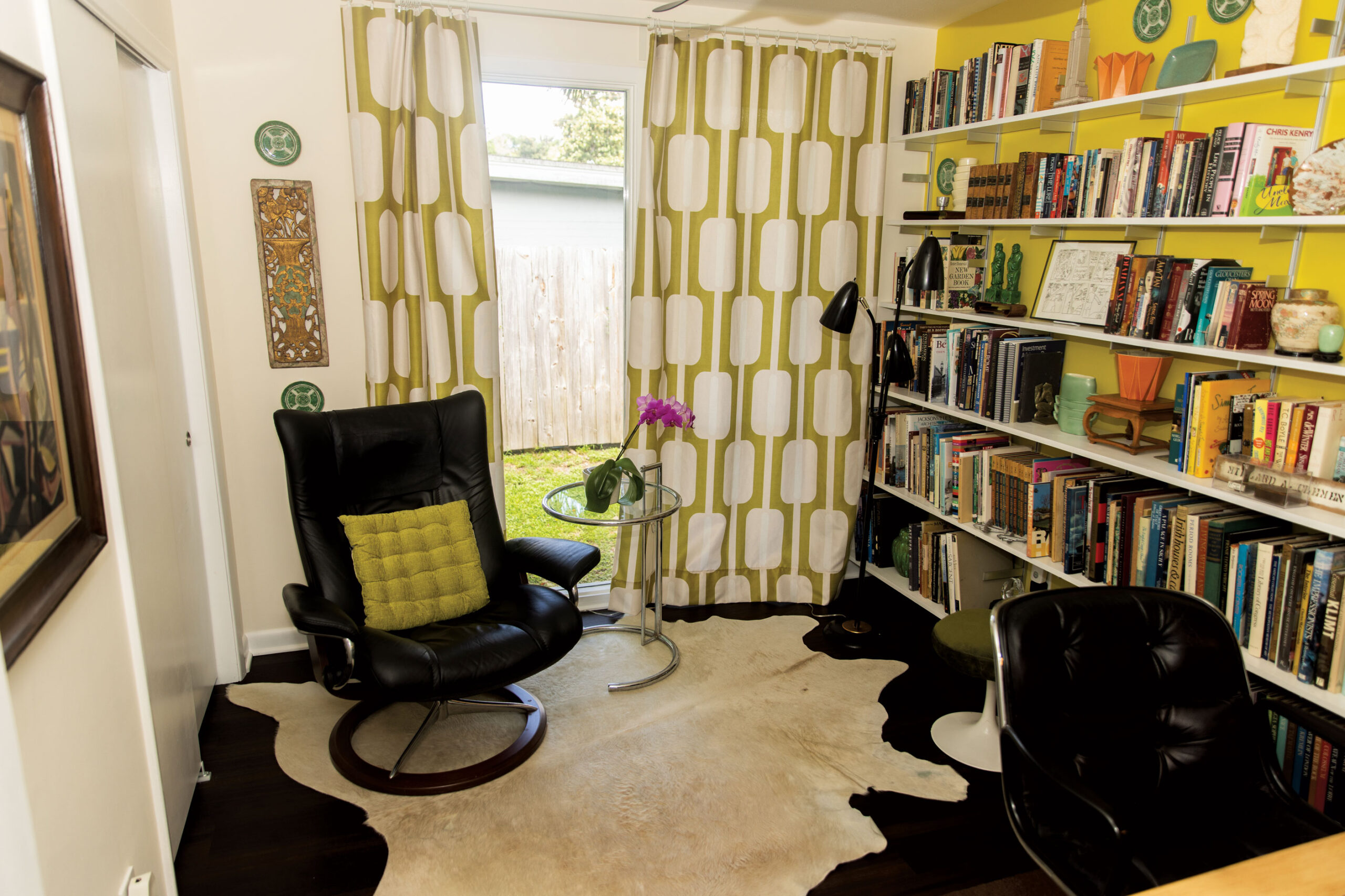 Of course, a home that has weathered some 70 Northeast Florida summers is going to need the occasional updates. Actually, chances are it will need quite a bit of work, if only to keep up with technology. According to Peter, the two have upgraded the kitchen and bathrooms, as well as the flooring, plumbing, HVAC, and alterations to the main bedroom suite.
Of course, a home that has weathered some 70 Northeast Florida summers is going to need the occasional updates. Actually, chances are it will need quite a bit of work, if only to keep up with technology. According to Peter, the two have upgraded the kitchen and bathrooms, as well as the flooring, plumbing, HVAC, and alterations to the main bedroom suite. Peter and John echo many of the sentiments shared in the Better Homes article. “The large expanses of floor to ceiling windows make for a very enjoyable and bright living environment, bringing in sunlight all day and beautiful sunsets. The broad overhang of the roof shades us during the hottest part of the day. The separation of public from private areas makes for undisturbed sleep,” says Peter.
Peter and John echo many of the sentiments shared in the Better Homes article. “The large expanses of floor to ceiling windows make for a very enjoyable and bright living environment, bringing in sunlight all day and beautiful sunsets. The broad overhang of the roof shades us during the hottest part of the day. The separation of public from private areas makes for undisturbed sleep,” says Peter.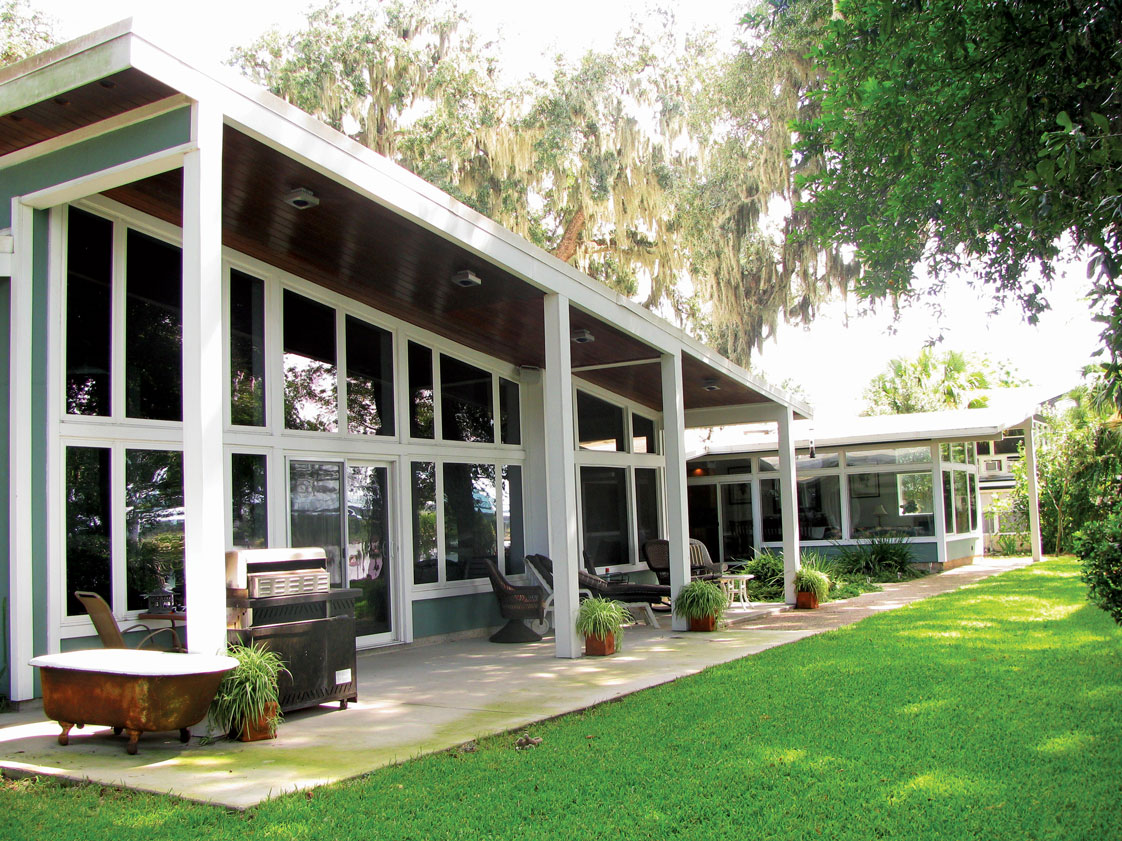 Since 1993, Old Arlington Inc. (OAI) has been focused on preserving the celebrating the neighborhood’s concentration of Mid-Century Modern architecture. One of the ways it accomplishes that goal is hosting the Arlington Mod & More Home Tour. Now in its ninth year, this year’s fundraiser—also known as Jacksonville’s Grooviest Home Tour—is scheduled for October 11, 10 AM-4 PM, and October 12, noon-4 PM. Patrons have the opportunity to visit eight private residences built in the 1950s through the ‘80s. As a special and unusual bonus, guests can also peek inside a real Cold War fallout shelter.
Since 1993, Old Arlington Inc. (OAI) has been focused on preserving the celebrating the neighborhood’s concentration of Mid-Century Modern architecture. One of the ways it accomplishes that goal is hosting the Arlington Mod & More Home Tour. Now in its ninth year, this year’s fundraiser—also known as Jacksonville’s Grooviest Home Tour—is scheduled for October 11, 10 AM-4 PM, and October 12, noon-4 PM. Patrons have the opportunity to visit eight private residences built in the 1950s through the ‘80s. As a special and unusual bonus, guests can also peek inside a real Cold War fallout shelter.
 The shoreline is dotted with a variety of lodging options, with the swanky Kimpton Vero Beach, funky Driftwood Resort, and Disney’s oceanside resort being among the top choices. The Kimpton is a stylish boutique hotel snuggled into a neighborhood of small shops, restaurants and watering holes yards from the beach. It’s complete with a fitness center, spa, cozy pool with private cabanas and an oceanfront bar. Its signature restaurant is Cobalt, a contemporary and elegant space serving three meals a day. When weather allows, a table on the patio is a wonderful way to wind down the day with a cocktail or two, perhaps a plate of tuna nachos or a dry-aged Delmonico ribeye.
The shoreline is dotted with a variety of lodging options, with the swanky Kimpton Vero Beach, funky Driftwood Resort, and Disney’s oceanside resort being among the top choices. The Kimpton is a stylish boutique hotel snuggled into a neighborhood of small shops, restaurants and watering holes yards from the beach. It’s complete with a fitness center, spa, cozy pool with private cabanas and an oceanfront bar. Its signature restaurant is Cobalt, a contemporary and elegant space serving three meals a day. When weather allows, a table on the patio is a wonderful way to wind down the day with a cocktail or two, perhaps a plate of tuna nachos or a dry-aged Delmonico ribeye. 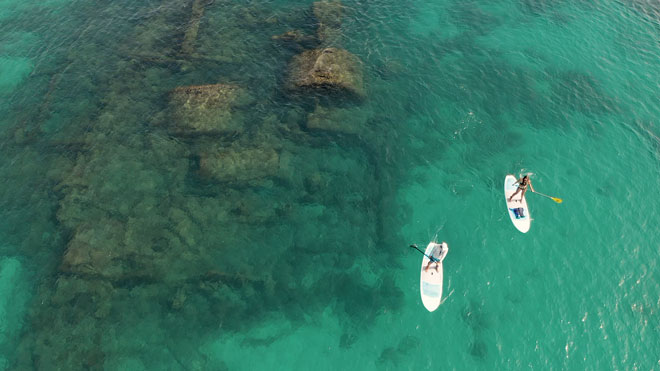 More delish eats can be found at two Vero Beach stalwarts, the Ocean Grill and Bobby’s Restaurant & Lounge. Both are beachside landmarks, with Bobby’s specializing is classic American fare like grilled steaks, baked potatoes, burgers and salads. The Ocean Grill is a visual treat with an interior clad in weathered wood, vintage decor, and large windows overlooking the beach. Bubbling crab dip, peel and eat shrimp, broiled sea scallops, and lump crab cakes highlight a seafood heavy dinner menu.
More delish eats can be found at two Vero Beach stalwarts, the Ocean Grill and Bobby’s Restaurant & Lounge. Both are beachside landmarks, with Bobby’s specializing is classic American fare like grilled steaks, baked potatoes, burgers and salads. The Ocean Grill is a visual treat with an interior clad in weathered wood, vintage decor, and large windows overlooking the beach. Bubbling crab dip, peel and eat shrimp, broiled sea scallops, and lump crab cakes highlight a seafood heavy dinner menu. 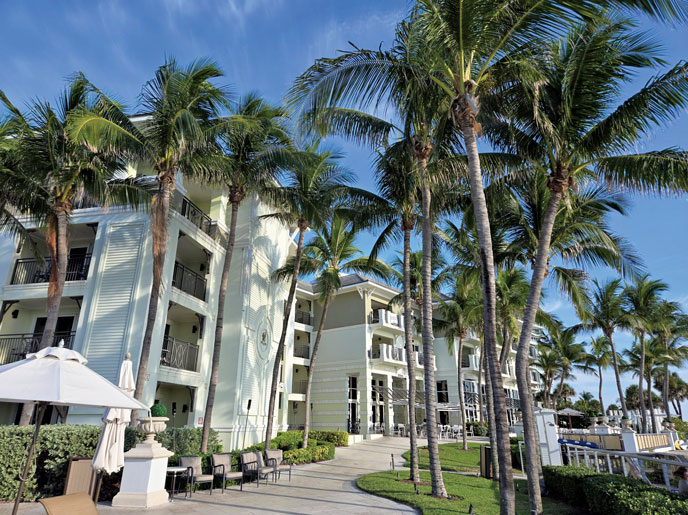 The stretch of Hwy. A1A near oceanside Humiston Park is ribboned with salons and small boutiques selling clothing, seaside-inspired gifts and home decor. Public parking is readily available, so find a spot and wander six blocks of jewelry stores, wine bars, and ice cream shops. The Muse Boutique offers an upscale mix of handbags, swimsuits and more beachy attire. A couple blocks north is The Twig, a Vero Beach shopping staple since 1973. Straw beach bags and purses, luxury skincare products, swimwear and more line its shelves. If visiting over the weekend, drop in at the Saturday morning farmers market, 8 AM-noon.
The stretch of Hwy. A1A near oceanside Humiston Park is ribboned with salons and small boutiques selling clothing, seaside-inspired gifts and home decor. Public parking is readily available, so find a spot and wander six blocks of jewelry stores, wine bars, and ice cream shops. The Muse Boutique offers an upscale mix of handbags, swimsuits and more beachy attire. A couple blocks north is The Twig, a Vero Beach shopping staple since 1973. Straw beach bags and purses, luxury skincare products, swimwear and more line its shelves. If visiting over the weekend, drop in at the Saturday morning farmers market, 8 AM-noon. 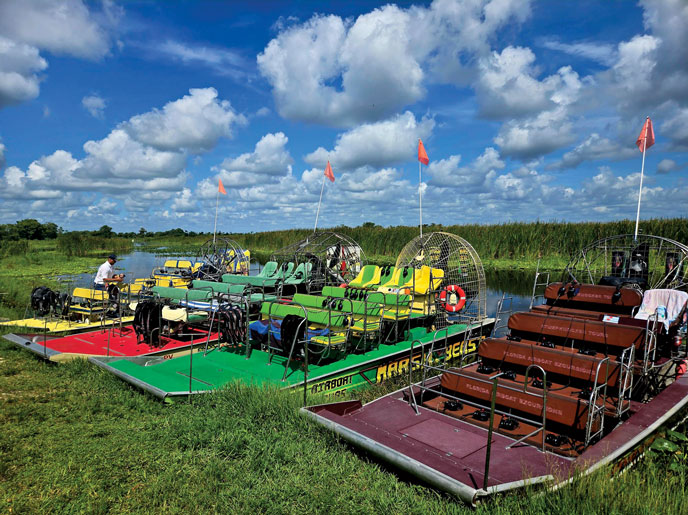 Just a few miles west of the beach, inland and past where I-95 slices down the state, remnants of Old Florida exist. Out here are thousands of undeveloped acres that make up a patchwork of wilderness such as the Blue Cypress Conservation Area. A ride aboard an airboat is the best way to explore these watery expanses. You will see gators, as well as blue herons, white ibis and wood storks. It’s loud and particularly thrilling when the boat’s pilot (Captain Krista with Florida Airboat Excurions, among other operators) throttles the engine and the vessel roars over marsh grasses and water.
Just a few miles west of the beach, inland and past where I-95 slices down the state, remnants of Old Florida exist. Out here are thousands of undeveloped acres that make up a patchwork of wilderness such as the Blue Cypress Conservation Area. A ride aboard an airboat is the best way to explore these watery expanses. You will see gators, as well as blue herons, white ibis and wood storks. It’s loud and particularly thrilling when the boat’s pilot (Captain Krista with Florida Airboat Excurions, among other operators) throttles the engine and the vessel roars over marsh grasses and water. 
 “This month, Step Up For Students released a breakdown of where students in Florida attend school,” opened a recent article in the Las Vegas Review-Journal. “The headline statistic is that more than half of Florida’s 3.5 million students in 2023-24 attended a campus outside their zoned public school. That’s a major change from the traditional model of bureaucratic line-drawers telling students what schools to attend.”
“This month, Step Up For Students released a breakdown of where students in Florida attend school,” opened a recent article in the Las Vegas Review-Journal. “The headline statistic is that more than half of Florida’s 3.5 million students in 2023-24 attended a campus outside their zoned public school. That’s a major change from the traditional model of bureaucratic line-drawers telling students what schools to attend.” 
 When I think about healthcare, I often frame it around four simple pillars: access, quality, cost, and accountability. Healthlink JAX represents all four.
When I think about healthcare, I often frame it around four simple pillars: access, quality, cost, and accountability. Healthlink JAX represents all four.